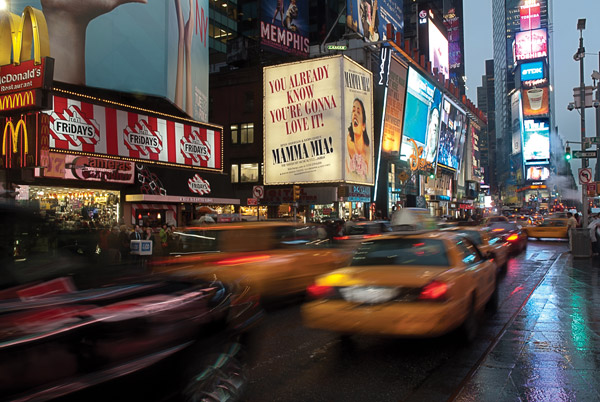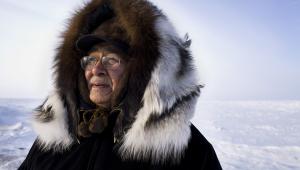Can You Make It As A Travel Photographer?: Working Pros Reveal Market Realities


Each photographer I interviewed for this article has different perspectives and opinions due to the different markets they pursue, but each has found their niche in the field of travel photography. Special thanks go to Paul Dymond, Karen I. Hirsch, Robert Holmes, Zave Smith, Randy and Andrea Wells, and Jake Wyman for their time and sharing of information. Please visit their websites, listed at the end of the article, to see more of their wonderful work.
(Editor’s note: The italic emphasis has been added by the author.)
Shutterbug: For your travel photography sales each year, what percentage would you say is assignment and what percentage is sold as stock?
Randy and Andrea Wells: At this time most of our travel income is stock. Our stock sales come from Getty, Corbis, and our own PhotoShelter site, images-of-america.com. Since our assignment work is wholly-owned by us, it becomes stock and we find that aspect very appealing.
Paul Dymond: The vast majority of my travel photography sales these days are stock sales. I do other commercial work—mostly environmental portraiture—that is all assignment but I have found the need for travel photographers on assignment seems to have greatly dropped off in the last few years. When I do have assignments, it is to write the article and take the photos. I can’t remember the last time a travel editorial client rang me up with an assignment just to take images.
Jake Wyman: At this point 100 percent of my travel photography sales are in stock.
Robert Holmes: I have always been an assignment photographer. I need the discipline and focus of an assignment to produce my best work. My stock has always been generated through assignments. Until about five years ago, perhaps as much as 80 percent of my income was through stock sales from Corbis and some from Getty. This income has steadily dwindled and now most of my income is from assignment work with maybe 10 percent from stock sales.
Zave Smith: Almost all my travel image income comes from assignment. I really have only one travel client but it is a wonderful one. I shoot for minority tourism in Louisiana and New Orleans. My travel stock does not bring in much income.


SB: Regarding marketing tactics, what seems to have worked best for you so far—given the different marketing tools available—advertising, direct mail, e-mail, website, sales calls, social media?
Jake Wyman: I use all of the above with varying degrees. For direct mail I have used both postcards and promos in envelopes. But today, I use mostly e-mail. Stamped promos go out every three to four months.
Zave Smith: I believe that in today’s multichannel market we photographers have to use as many tools as possible from sourcebooks like The Workbook to source sites like Altpick and FoundFolios to our blogs and presence in the social media world. This includes direct mail, networking, and even going on sales calls. The key is to have all these modalities of communication singing the same song so that potential clients can learn what you stand for.
Paul Dymond: I have always found that the best way to market my work is to get it published in articles and have it seen by as many people as possible. From my own experience I have found that if I go somewhere on a “writer’s famil” then I might come away with 100, maybe 200, publishable images. A “writer’s famil” is short for familiarization trip. It’s a trip to somewhere—often a foreign destination—organized by a tourism bureau or public relations company where travel writers are hosted. The travel writers are taken to various attractions during their stay and then expected to write an article about the experience afterward.
There’s not enough money in editorial travel writing and photography for freelancers to pay for themselves to go away as much as we need to get published, so any travel writer worth their salt does all their travel on these kinds of trips. Some are organized for the writers and sometimes the writers put together a trip they really want to do and then approach people for support. I don’t find this source to be enough to advertise the images so I wouldn’t put an alert out saying, “Hey I’ve just been to so-and-so, come and look at my site to find images.” I just don’t have a deep enough coverage to compete with what’s out there. So these images will go along with articles and wind their way into my stock libraries at Alamy and Lonely Planet Images (recently bought by Getty).


Where I can advertise myself, and feel confident that I can compete, is in the areas that I have a deep coverage of and know really well. So, for me, that is the area around my base of Cairns, and my wife’s hometown of Sapporo in Japan. I have literally thousands of images of these two destinations and if a client comes to me looking for something they can’t find for free then chances are I have it. Once you start getting images published that aren’t freely available elsewhere that’s when you start to build a critical mass of sales.
Robert Holmes: My website has always been my best marketing tool. I have been in the business long enough—30 plus years—to have established a strong client base and the majority of my work comes from referrals. I cannot emphasize enough how important networking is. Even joining membership organizations of potential competitors such as ASMP or APA can result in opportunities. In the early 1980s I became a close friend of Dewitt Jones through ASMP and he handed over an assignment that he was too busy to take that ultimately resulted in my first two books. You never know where work is going to come from. Be professional, be reliable, be fun to work with, produce great work and the clients will keep coming back.
Randy and Andrea Wells: The best marketing tools are links to the Internet via e-mail, websites, blogs, and social media. You really need to feature your unique capabilities and have everything up and running together with frequent updates and good SEO (Search Engine Optimization). Print advertising, direct mail, and sales calls are also important but less interactive for travel clients.
Karen I. Hirsch: Regarding marketing tactics, I am using social media and have joined travel-oriented groups online such as the International Travel Writers Alliance on LinkedIn. If you can write as well as do photography, you have a better chance of being published. This is nothing new! Years ago, when I showed my photos of France and Spain to the travel editor of the Chicago Sun-Times, he asked me if I could write. I, of course, replied, “Yes.” He asked me to write an article about the photos that I had presented, which I did. The story landed on the front page of the travel section, and led to more articles.


The best marketing tactic is to develop a relationship with a client. Reach out to someone one-to-one. If contacting the person via e-mail or direct mail, write something to let the person know that you are familiar with the person’s work or with his publication. You might say something like how much you liked the story on art galleries in Barcelona in the last issue. Do research, so that what you are proposing is appropriate to the publication. Networking at trade shows is another tactic to get to know people in the travel industry.
Think about different ways that your travel photography can be used beyond magazine or book publishing. Producers of puzzles look for travel images. Showing your prints at art fairs, in a rotating gallery at a local café, in a pop-up art space, or in a group exhibit is another means of getting your work known and may lead to some extra income.
SB: What do you recommend are the best ways to research and find travel photography clients?
Randy and Andrea Wells: We identify those in the travel industry who use the photography we most enjoy producing and contact them. We also use a promotional service for direct e-mail marketing of our imagery and services to a select group of clients.
Zave Smith: Some of the best ways to find clients is not to look for them but to let them find you. This can be done by creating buzz about your work and by giving back in ways that also creates buzz. The GMc Advertising Agency based in New Orleans came to me after reading a piece I wrote about creativity. They originally wanted to hire me to write copy, which I turned down, but that relationship evolved into shooting both stills and motion for them.
Jake Wyman: I use the Internet and for editorial, corporate, and ad agency mailing lists I use the company Agency Access. I usually go after all travel clients but less so the editorial side for now.
Robert Holmes: This is a tough one. Magazines were always the primary editorial outlet but these now have negligible budgets for photography, fewer pages, even fewer magazines, and the competition has quadrupled. Not a very rosy scenario. Anyone who uses travel photographs is an obvious market but think domestically more than internationally. Every CVB (Convention and Visitors Bureau) and tourist bureau needs new work on an annual basis. Also think outside the box. Travel photography is not just destination photography. If you have other interests—fly fishing for example—use that as the reason to travel and cover these activities for markets needing this kind of imagery. Destination travel photography as it used to be has gone the way of film!



Paul Dymond: I think it really depends on what arm of the travel photography field you want to work in. I have never really been a commercial travel photographer. So not too many girls in bikinis walking along sunny beaches, I’m afraid! My love has always been editorial and telling the stories of real places and real people. For me the best way to get my work out there has been to produce travel feature article packages—words and pictures. I try to tailor the images to the story and provide something not available from the tourism boards. A couple of years ago I signed up with PhotoShelter and I have been gradually loading up images from my two specialty areas—far north Queensland, Australia and Hokkaido, Japan.
I’ve found that keywording images on there has led to quite a few unexpected people finding me and licensing images. Just recently I came back from a week in Okinawa. I posted the images to my PhotoShelter site and blogged about it and within a few days had three requests for images to illustrate an article. So it just goes to show that having properly keyworded images online is definitely a great way to have your images discovered. Recently I have also been sending out e-mail promos to a select list of past clients using MailChimp and that has brought some success.
SB: What are the top industry changes you have seen in the travel photography market in the last few years?
Karen I. Hirsch: Paid assignments seem to be fewer but there are more travel magazines/blogs online that need content. Travel brochures use stock photography, which is abundant. When a publication needs something very specific that is hard to find in stock, it may send someone on assignment to come back with the needed images.
Paul Dymond: One of the biggest changes I have seen in the editorial travel photography market down here in Australia is that many magazines and newspapers are obtaining their images from free sources, such as state and national tourism boards and public relations companies. I even picked up one in-flight magazine the other day that was 100 percent free images. Many of my friends had articles in there but not a single one of them had any images published. Of course photographers are being paid to shoot campaigns for those tourism bodies but the rates aren’t necessarily commensurate with the amount of usage they get out of them.
Many travel photographers work as travel writers as well. It’s a lot easier to sell a feature package than stand-alone images. Travel writers usually get sent on famils (trips) by public relations companies or tourism boards, and then sell their articles to publications down the track. It was always considered that having their product written up in print was the payback for these companies, but since the advent of digital photography, and now video-capable D-SLRs, more and more of the companies are asking the writers/photographers to hand over their images and footage for use in advertising for no cost whatsoever—not good for business. A travel writer friend of mine was offered a weekend trip just last week which required her to hand over 250 high-res images for use in promotion by a tourism bureau. They wanted the images for free. Needless to say, she refused!

Robert Holmes: The digital revolution has made everyone a photographer. Every travel writer is now a photographer, too. This combined with the proliferation of sites offering free photographs has decimated the stock side of every travel photographer’s business.
Randy and Andrea Wells: The switch from analog to digital travel photography is now complete. Never before has it been as easy for someone to produce a usable travel photograph. And never before have as many travel images been posted to the Internet. Unfortunately, many of these posted images are deemed of “good enough” quality, are free to download, and are not credited to authorship. Consequently, even though demand may be increasing, so has the supply of still travel photographs, and many of these are now considered of little value or are simply “orphans.” Professional travel photographers (those who approach their business long-term) have had to consider how to add value to their work and supplement their incomes.
Zave Smith: Like all photography projects the biggest concern over the last couple of years has been budgets, budgets, budgets. All clients are trying to leverage all visual assets onto as many platforms as possible at the best possible price. For me this means shooting motion as well as stills and using the flexibility and speed of digital capture to create a large amount of unique images in a short period of time. This also means being very efficient with production costs and values.
Takeaways
• Travel photography marketing benefits the most with a “multichannel” approach using different
self-promotion tools but all reaching the same audience with the same message.
• Be sure to properly keyword your online travel images so that both stock and assignment clients can find you.
• Niche marketing has never been more important! It could be an activity at a destination or a story of a destination or a pitch to sell tickets to the destination but you have to be very specific to be competitive.
• Note the different markets for travel discussed in the interview. You have the photography of travel, for editorial clients and telling the story of a destination. Alternatively, you have the photography for travel, for advertising clients and selling tickets to a destination!
• Add more value to your travel photography business by adding services such as video capture or adding a unique perspective or “voice” to your travel images such as a hobby, historical or cultural viewpoint.
Website Resources
Paul Dymond
• www.dymond.com.au
Karen I. Hirsch
• www.karenihirsch.com
Robert Holmes
• www.robertholmesphotography.com
Zave Smith
• www.zavesmith.com
• http://zavesmith.wordpress.com
Randy and Andrea Wells
• http://images-of-america.com
• http://randywells.com/blog
Jake Wyman
• www.jakewyman.com
• http://jakewyman.blogspot.com
• http://jakewyman.prosite.com
















































